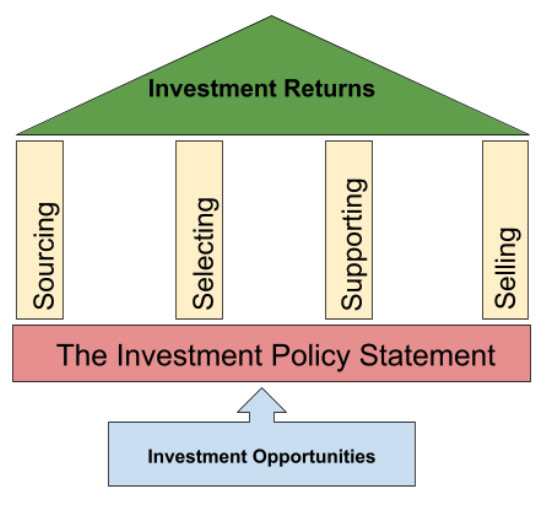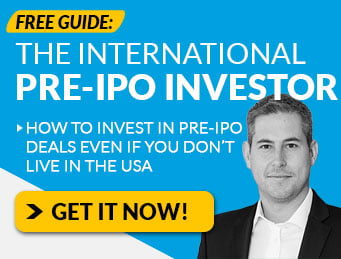We’ve talked about the four core pillars of investing – Sourcing, Selecting, Supporting and Selling.
And we’ve talked about some basic “Power Law Portfolio” construction principles (go here to check out the “Intro to Pre-IPO Investing” training for more details).
But eventually, many of our members ask us some version of the question “what is your due diligence process for Issuers on your platform?”
For us, it all starts with the foundation of investing…
A game is a form of art in which Players gather Information and make Decisions in order to Manage Resources… through the use of Game Tokens… in the pursuit of a Goal… in the face of Opposition.
Just like any other game (or sport), the “hard work” and “effort” required to achieve your own personal goalswin is what makes it fun.
Now, to be clear, this doesn’t mean you need to get an MBA, work on Wall Street, or learn how to do forensic accounting.
You can – and should – hire professional advisors to help you with any aspects of wealth building you’re not an expert in and have no intention of becoming an expert in (i.e. tax and estate planning).
However, if you don’t have a clear picture of what your lifestyle goals (i.e. cash flow) and legacy goals (i.e. net worth) are…
It’s essentially impossible to build a portfolio – or a team of advisors – that can support your current and future financial needs.
That’s why you need a clearly defined plan that lays the foundation for investment decisions you plan on making.
This document – called The Investment Policy Statement – should help you identify four things…
- Primary Motivation: What is the goal of this portfolio?
- Investment Style: What types of investment products (or trading strategies) will you consider?
- Investment Process: How do you answer the question “is this a good investment?”
- Risk:Reward Profile: How much risk are you willing to take for the anticipated reward?
When you look at the typical unsuccessful investor, there’s one major thing we believe is a likely contributor…
They likely don’t have clarity around their goals aside from “I want to make money” (greed) and “I don’t want to lose money” (fear).
As a result, their Primary Motivation is based around short term gains and entertainment (also called “gambling”).
They’re constantly chasing the next “hot stock/coin/nft” being shilled… and think in time horizons of days, weeks, and months (instead of years and decades).
As a result, their Investment Style is entirely reactive.
The majority of investment opportunities they hear about are – in reality – advertisements, paid media placements, and other forms of “hot tips.”
This means deal flow is essentially “random” and causes the investor to evaluate each deal on a 1:1 basis.
The end result is a question like this: “Should I invest in [XYZ]?”
Which, by itself, is an impossible question to give a simple “yes/no” answer to.
Why? Because in order to answer that question, all investments should be considered on a 1:many basis – this opportunity vs all opportunities you can invest in – and in relation to the rest of your portfolio and your personal financial goals.
This also implies that you are, in fact, building a portfolio of investments based on some sort of logic. (i.e. Barbell Investing)
Chances are, you’re probably getting a host of “stock picks” and “trade ideas” from a variety of sources…
But chances are, you’re not following a single analyst’s model portfolio (passive investing); you’re probably building your own portfolio (active investing) or otherwise trading multiple strategies.
If this is what you’re doing, it means you must have an Investment Process that clearly defines how you will decide which investments you will – and perhaps more importantly, won’t – consider.
This, in turn, should be based around the overall Risk:Reward Profile you are willing to accept as part of your strategy.
As an interesting side note, retail investors tend to take LOT more risk – for smaller returns – than the professional investors do.
Because risk doesn’t come from the investment itself…
It comes from the investor not knowing what they’re doing.
For this reason, whenever we’re talking to founders about helping them raise capital from our Equifund community, we think about it through a few simple frameworks…
1) Could the business benefit from actively engaging a retail shareholder base?
One of our core frameworks at Equifund is called the Customer/Shareholder Flywheel.
Customers who love the product, become long-term Shareholders, and have incentives to help grow the company as an Advocate in the marketplace (i.e. generate referrals, write testimonials, and provide enhanced product feedback).
With this framework, the Equifund Community doesn’t just bring capital to the table when funding deals. We bring potential customers as well.
As you can imagine, this dynamic is very appealing for the right type of company.
However, we know that our members prefer investing in companies that provide regular communication with their investors vs those that do not.
For this reason, we’re looking for companies who see the long term benefits of building and engaging a retail shareholder base.
2) Are they a real business with plans for a real exit? Or is this a cash grab and a slide deck?
Our second core framework is called The Capital Markets Slingshot: an iterative approach to fundraising that attempts to minimize dilution for early shareholders and maximize potential gains.
If you’re interested in investing in ultra-early stage companies with pie in the sky projections, lots of buzzwords, and a business plan that requires a cascade of miracles in order to work…
Good luck.
But we prefer companies run by experienced teams with a track record of success.
We know that our members want to invest in speculative opportunities that have the potential to deliver significant returns.
We also know that most speculative investors don’t want to be locked up for 5-10 years; ideally, they’d be liquid in 12 months or less.
For this reason, we’re looking to work with Issuers who are either already public… or are setting a goal of going public in the next 1-3 years.
To be clear, this is not a guarantee that all of our listings will complete an IPO. Statistically speaking, most companies that make an exit do so via mergers and acquisitions.
However, there’s a big difference between a management team who is proactively building towards a public listing and a company that has no clear direction towards an exit.
3) Is it an investor friendly deal structure?
Our third core framework is “investor first.”
We don’t highlight how much money we’ve raised for founders on the front page of our website…
And we don’t highlight what percentage of issuers who apply to list on Equifund that wind up being accepted.
Because none of that matters if our investors don’t see returns!
While we can’t guarantee any of our listings will generate positive returns…
We find it appalling that other platforms list what we would consider highly questionable deals at wildly inflated valuations with terrible deal terms.
And while we can’t speak to the listing requirements of the other platforms…
It takes us 12-30 weeks of due diligence before we list a new deal.
Why? Because as Warren Buffett is famous for saying: “It takes 20 years to build a reputation and five minutes to ruin it. If you think about that, you’ll do things differently.”
Every time we take on a deal, we know that we put our reputation – the Equifund brand name – on the line.
And while we can’t guarantee returns… or that we’ll be right every single time (no one can)… we can assure you that we’re going to give you our very best effort.
Sincerely,
Jake Hoffberg – Publisher
Equifund


